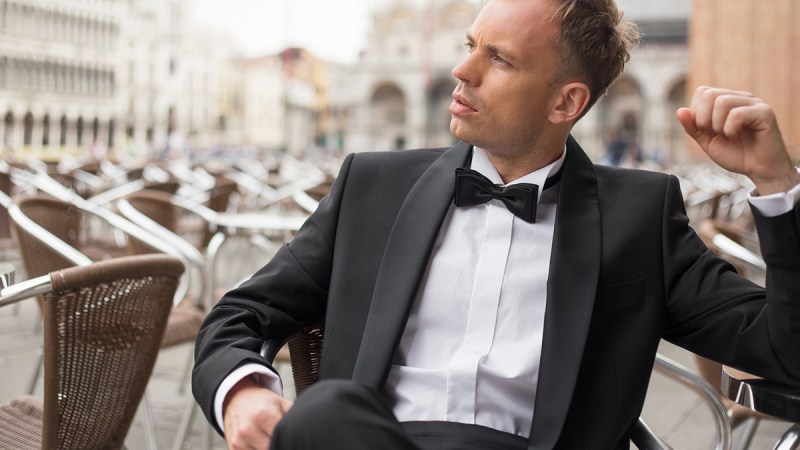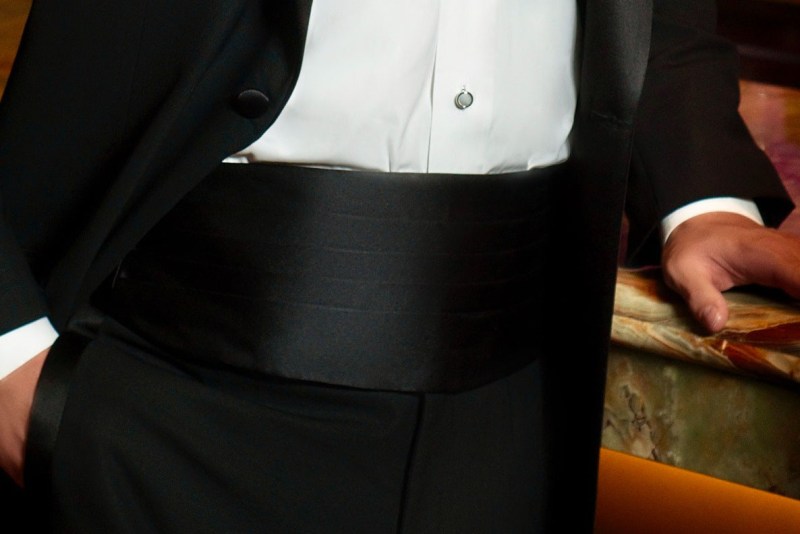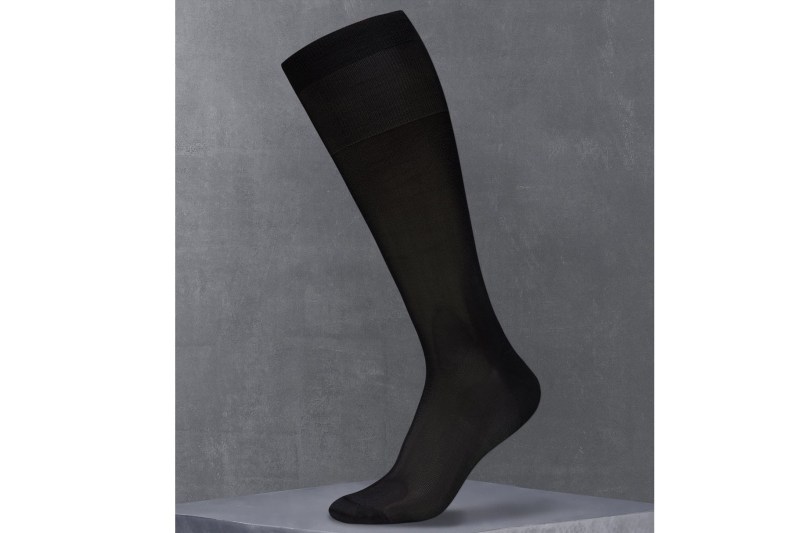
It’s finally happened. For the first time, or the first time in a very long time, you’ve received an invitation with the words “black-tie attire,” or “formal attire,” engraved into that creamy white paper. Whether it’s a wedding, a charity gala, or a political reception, this is the one time when what has become an almost universal casual dress code is thrown out the window, and all those Society (with a capital S) rules from the 19th century kick in.
The host or hostess of a formal event has chosen to go this route because they want a very controlled, perfect event, so this is not the time to place yourself in the sartorial spotlight. We men actually get off pretty easy for formal events: Although we’re expected to be well-groomed, dressed appropriately, and on our best behavior, we don’t have to go to nearly the trouble that women do.
We’ve gathered all the tuxedo tips you’ll need to pull off your formal wardrobe for the day: we’ll leave you to learn all the rest of the proper comportment and etiquette that a truly formal event requires.
The tuxedo

For a formal daytime event, it’s totally appropriate for a man to wear a dark suit with a toned-down shirt and tie: Stick to solids, in neutral colors.
If it’s an evening affair, however, you’re expected to show up in a tuxedo. The tuxedo is, after all the ultimate expression of a suit. There’s an acceptable structure to a tux, so it almost becomes a uniform, but there is ample opportunity within that framework to put together something that complements your proportions and expresses your personal taste.
Items to keep in mind when picking out A tuxedo
- Color: Usually black, but midnight blue is acceptable: When tuxedos first became common in the 1920s, much of the newly introduced electric light had a yellow cast, so savvy tailors made their clients’ formalwear in a dark blue to create the illusion of true black.
- Fabric: Wool is most common, but matte silk is an extravagant alternative. These days, man-made performance fibers, often blended with wool, are also an option.
- Lapels: Either a peaked lapel (where the lower portion of the lapel points up towards your shoulder and away from the collar of the lapel) or a shawl collar (in various silhouettes, but basically a rounded collar that runs around the jacket opening) is acceptable. The notch lapel, so popular in suiting, has also been used recently, but it’s not considered to be very expressive of formality. Try a few styles on and see what makes you feel most celebratory. Traditionally lapels are also done in a satin or grosgrain fabric for a subtle contrast with the matte suiting fabric.
- Button placement: Just like with suits and sports coats, there are options. You can wear a clean and modern one-button jacket, or — since tradition is the buzzword here — wear a six-button double-breasted model.
- Fit: A tuxedo should fit flawlessly more than any other tailored garment you’ll own. If you’re buying one for the first time, either consider making the investment in a custom tuxedo that will last you a while (providing all the motivation you’ll ever need to stay in great shape) but at least make sure to allow enough time for the shop’s tailor to fit it to you. If you already have a tux and haven’t broken it out in a while, see a tailor to ensure it fits your current body, not you from a few years ago. Finally, although a tuxedo fit should be comfortable and flattering, make sure the fit looks modern without being too trendy. A very slouchy or super skinny tuxedo may make you feel very au courant now, but it’s best to get as much as a decade of wear from it.
- Pants: Like suits, the trousers are usually sold with the jacket (although J. Crew and several other companies do sell separates so you can achieve more of a custom fit without necessarily paying for a full custom experience). The color and fabric will match the jacket. A strip of satin — varying anywhere from a small piped line to an inch or so wide — runs down the outside of each leg. As a throwback to those days when all men’s suits were made-to-measure, tuxedo pants traditionally don’t have belt loops. They will often have tabs on the side for some adjustment, but if you’re very nervous, feel free to wear black suspenders. Again, traditionally the trousers should include buttons on the inside for suspenders so you won’t have to have clips ruining the line of the waistband.
The tuxedo shirt

Like the tuxedo itself, a formal shirt can have a sort of retro quality to it, but there’s some allowance for personal expression.
Choosing your tuxedo shirt
- Color: White. Period. A shade of ivory might be acceptable. Anything else is “black-tie creative,” or cocktail wear. It’s the perfect contrast to the black tuxedo jacket.
- Fabric: A simple cotton poplin is the most common.
- Collar: The wingtip collar (as shown above) is the most formal version. It’s the one where a banded collar has two triangular points that point up and over the tie. The turndown collar, which is the version that you know from most dress shirts, has become a pretty common contemporary option. That also allows for any of those variations from spread to cutaway, etc., but not a button-down.
- Front: Unlike a regular dress shirt, if you choose, a formal shirt can have a decorative element. Simple pleats are considered quite elegant, but a pique fabric adds some texture. The fluffy ruffles from the 1970s are still best left to costume parties.
- Buttons: These should probably be white mother-of-pearl or possibly black. You may want to purchase a shirt with a removable twill strip of buttons, so a stud set can be worn with the top four buttonholes.
The waistcoat

This is one of two options for taking the black-tie uniform a step further. Vest styles vary, but should probably be the same fabric as the tuxedo. It can also be white, but even that neutral color can come off as a bit flashy. Just remember that it may be a bit warm depending on the season or the venue’s thermostat.
The cummerbund

The other option is much simpler: the cummerbund is a sort of pleated belt, like a sash that’s been tamed. Its pleated fabric wraps around your waist and usually has elastic straps so it can be fastened behind your back, under the jacket where nobody will see it. The pleats should be worn turned upwards, and the style looks best on those with slim figures.
The tie

Like the tuxedo, keep it black. After all, this is “black tie.” It can be a bow tie, the most formal (self-tied, please), or a regular necktie. Satin is best. Be sure the proportions of either silhouette balance the jacket, paying particular attention to the lapels.
The socks

Black. To the knee. Sheer, if you’re brave enough to pull that off. No dumpy crew socks. No naked ankles.
The shoes

Footwear is probably the simplest part of a formal wardrobe, and yet in an odd way, it’s also the one place where there’s some latitude. The classic black Oxford or cap-toe shoes that you might wear for work are perfectly acceptable; just make sure they’re polished and in great shape. Some men like to keep a pair of patent or velvet slip-ons around just for formal occasions, and a tassel or embroidered family crest is an elegant embellishment.
Even more formal: White-tie dress

It’s hard to believe that there is a more formal level of dress than black-tie attire, but it does exist. So-called “white-tie” attire, which is generally characterized by the distinctive tailcoat and is generally reserved for the most formal of events like state dinners with royalty (see the above photo for an example — former President Barack Obama donned white-tie attire for a visit with Queen Elizabeth II at Buckingham Palace).
So unless you’ve got some friends in VERY high places, you probably won’t be getting a “white-tie” invitation anytime soon, but if you do, it’s not much different from a regular tuxedo. The main difference is in the coat, which has a very low button, and instead of ending just past the waist, the tails of the coat extend down in what’s called a “swallow’s tail.” As the name might suggest, the tie (always a bow tie) is white and it’s paired with a white vest — there’s no room for other colors here. Other than those differences, the rest of the outfit is the same as a tuxedo.



